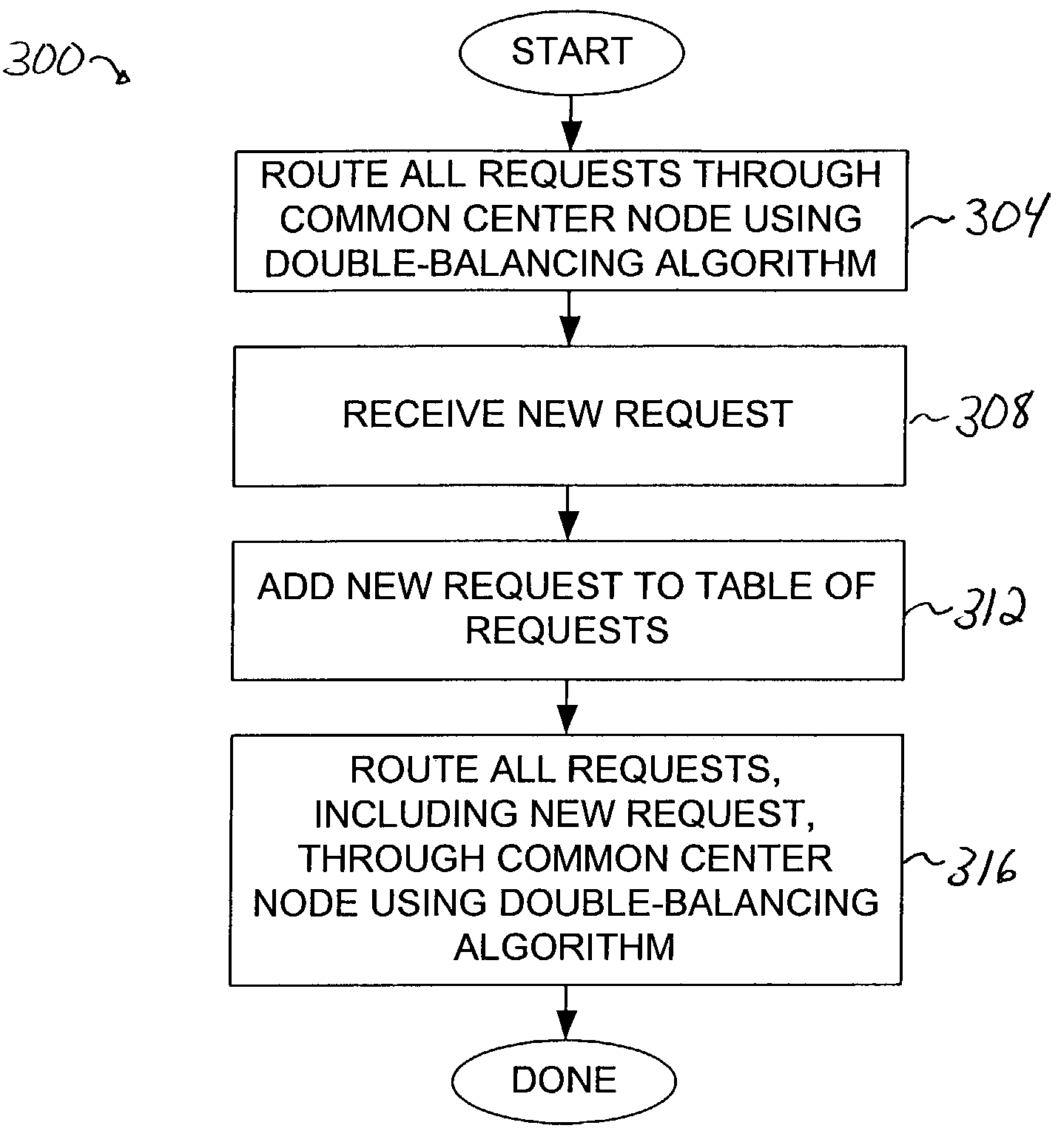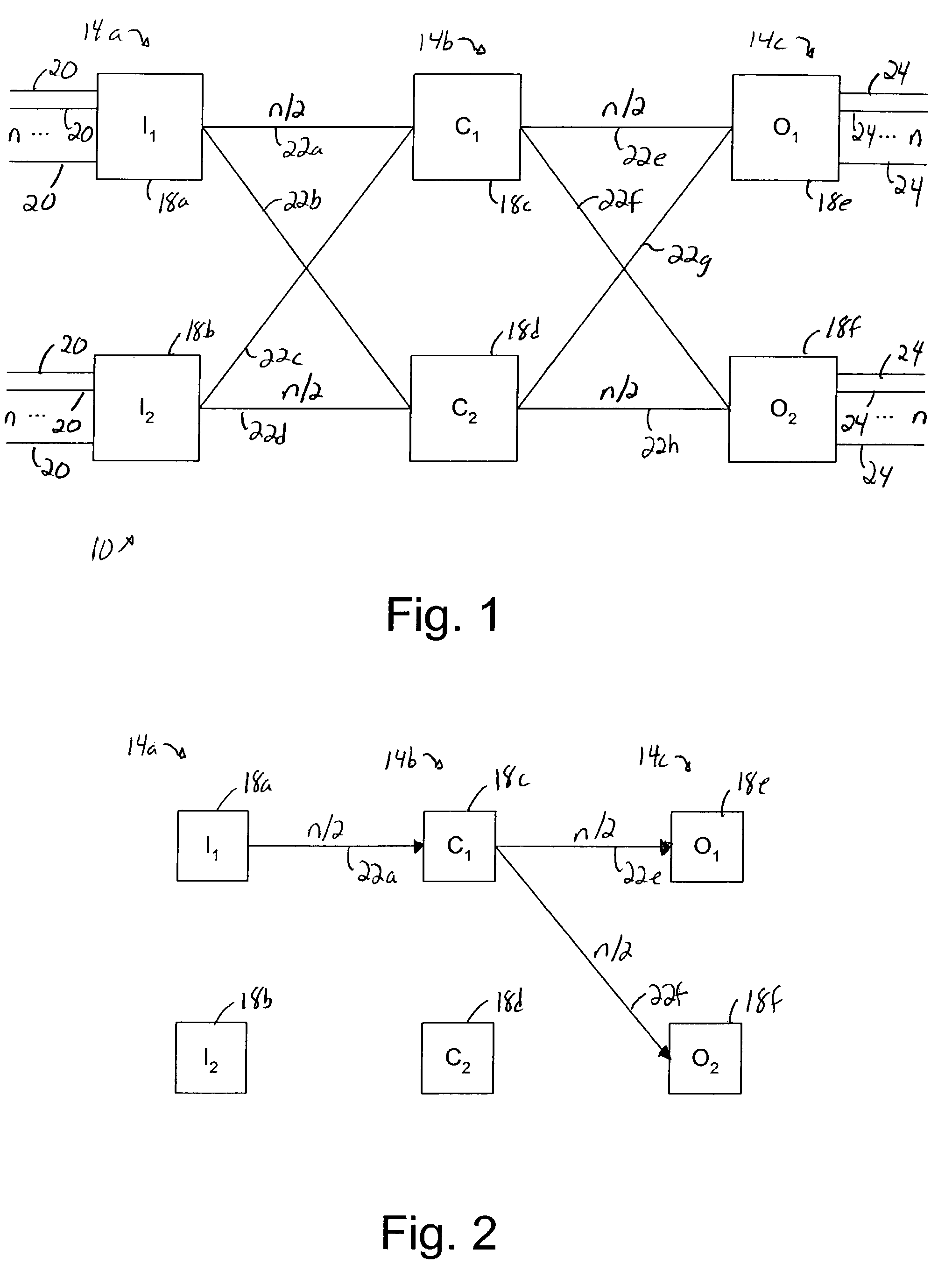Method and apparatus for mixed-cast routing through a Clos-like network
- Summary
- Abstract
- Description
- Claims
- Application Information
AI Technical Summary
Benefits of technology
Problems solved by technology
Method used
Image
Examples
Embodiment Construction
[0032]It is necessary for many Clos-like networks to have the ability to support mixed cast requests, e.g., both unicast and multicast requests. When a double-balancing technique is used to route mixed cast requests through a Clos-like network, as for example a six-node Clos-like network, the load associated with the requests may be routed relatively evenly. However, for larger networks or networks with substantially no extra center stage capacity, the performance, e.g., in terms of the efficient utilization of bandwidth, associated with multicast requests may be compromised. The efficient algorithms for rearranging unicast signals in a true Clos network are generally relatively ineffective in routing multicast requests.
[0033]An algorithm which allows mixed cast requests to be routed using a double balancing technique that enables a multicast request to be routed using more than one center stage node within a Clos-like network enables good performance to be achieved in routing both ...
PUM
 Login to View More
Login to View More Abstract
Description
Claims
Application Information
 Login to View More
Login to View More - R&D
- Intellectual Property
- Life Sciences
- Materials
- Tech Scout
- Unparalleled Data Quality
- Higher Quality Content
- 60% Fewer Hallucinations
Browse by: Latest US Patents, China's latest patents, Technical Efficacy Thesaurus, Application Domain, Technology Topic, Popular Technical Reports.
© 2025 PatSnap. All rights reserved.Legal|Privacy policy|Modern Slavery Act Transparency Statement|Sitemap|About US| Contact US: help@patsnap.com



